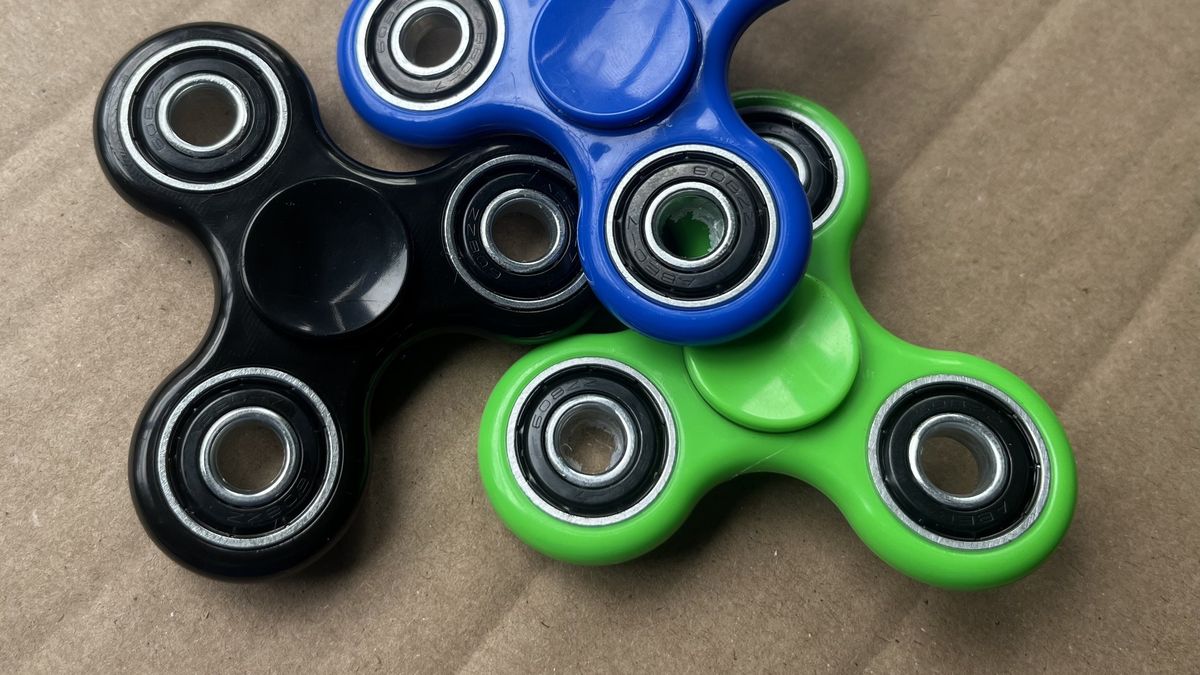Some inventions cause a stir upon their launch andthey manage to generate millions in salesbut they are not always kept on the market. The fidget spinners They were a clear example of this: a phenomenon that captured global attention but whose success was short-lived. From therapeutic tool to viral toy, its initial impact did not guarantee its permanence.
Fidget spinners, popular at the time, are an example of how some products can quickly go out of style. Despite its explosive success, its relevance faded almost as quickly as it emerged. The fact is that this therapeutic entertainment generated more criticism than praise and opened a debate about its use.
Fidget.jpg
fidget spinners, the toy that generated as many millions as reviews
History of fidget spinners
The origin of the fidget spinner is attributed to Catherine Hettingerwho in the 90s began working on the idea of a toy that would help his daughter entertain herself without requiring much physical effort on her part. Hettinger suffered from a disease that limited her mobility, which led her to design a toy that could be easily operated with one hand. Although the first version of the spinner was quite rudimentary, its functionality evolved over time.
Then, USA was experiencing a boom in the creation of toys that offered more than just fun; many were designed to assist in the cognitive and motor development. The fidget spinner was presented as a device that promised to improve concentration and reduce anxiety. However, the toy did not take off immediately, and Hettinger was unable to renew the patent he had applied for.
Although Hettinger is popularly recognized as the creator of the fidget, there are those who question her true role in the creation of the invention. A debate surrounding the authorship of the device began to arise when other inventors, such as Scott McCoskery, They presented more advanced and marketable versions. McCoskery, for example, developed a more sophisticated spinner that eventually caught the attention of the global market, leading to the mass popularization of the toy.
The rise of fidget spinners occurred mainly in 2017, when social networks and the media began to promote them as an irresistible trend among schoolchildren. However, its lifespan on the market was short, and public interest soon waned.
The Fidget Spinner as therapy
Throughout its rise to fame, the invention was promoted not only as a toy, but also as a therapeutic tool. Mental health and educational professionals began using it as a method to help patients with disorders such as ADHD, anxiety and autism. The theory behind its effectiveness was that keeping hands busy allowed people to focus better on their tasks.
The use of this toy as therapy was supported by testimonies from educators and therapists, who noted that some children were able to better control their anxiety thanks to the invention. However, not everyone agreed with this idea, as many experts believed that the device could be more a distraction than a real help. Without conclusive studies, the scientific community was divided regarding the therapeutic benefits of the spinner.
Despite the controversy, the fidget spinner gained followers among those looking for a solution to daily stress. In addition, its low cost and ease of use made it an accessible option for many, which contributed to its massification.
Fidget Spinner Cancellation
Despite their initial success, fidgets soon faced problems in their acceptance in classrooms and other public spaces. Initially, their popularity grew so much that it became common to see students using them in class, which generated concern among teachers, who saw them as a source of distraction. In many schools, its use was prohibited because it was considered detrimental to learning.
This ban marked the beginning of the end for the invention. Over time, its reputation went from being a therapeutic tool to being seen as a simple toy that caused more problems than good. In addition, the market quickly became saturated with low-quality imitations, which also caused many children to suffered health problems for ingesting parts of the toy that came off easily.
Eventually, fidget spinners disappeared from shelves as quickly as they had appeared, becoming a reminder of how viral fads can be as fleeting as the spin of one of your propellers. Today, although some still use them, their relevance is in the past, eclipsed by new products that capture the world’s attention.
Source: Ambito
I am Pierce Boyd, a driven and ambitious professional working in the news industry. I have been writing for 24 Hours Worlds for over five years, specializing in sports section coverage. During my tenure at the publication, I have built an impressive portfolio of articles that has earned me a reputation as an experienced journalist and content creator.




